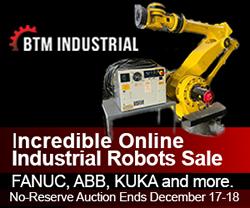Ford Drives Quality Through $100 Million Investment in Robots with Special Vision
Ford Motor Company is investing $100 million globally to install robotic plant laser inspection technology to improve quality through reduced wind noise and more refined fit and finish.
This new technology is being used during assembly of the popular new 2012 Ford Focus at Michigan Assembly Plant and the Saarlouis, Germany, plant, and the hot-selling Ford Explorer at Chicago Assembly Plant. The technology then will be rolled out globally as part of Fords next phase of its quality initiative to lead the industry in customer satisfaction.
"Fords robotic laser technology gives us a degree of precision like never before," said Ron Ketelhut, chief engineer, Body Construction Engineering. "The vision technologies verify the dimensions of interfaces on the vehicles body in a highly accurate way, to a tenth of a millimeter."
The technology helps ensure car door panels fit more accurately and reduce wind noise, a key quality factor for consumers and a major industry challenge. The laser and camera systems that are major upgrades to plant robots were developed in collaboration with minority business partner Gonzalez Production Systems, and significantly improve the robustness of the overall manufacturing process.
The technology builds on laser-guided, end-of-line robotic technology pioneered by Fords European team to measure points on each vehicle as it moves past the line to verify build quality. The robots are programmed to recognize any minute deviations from the correct specification and, if any errors are found, instruct the operator on the correct course of action. Ford first used the system in Germany and, after seeing quality gains, quickly rolled it out to plants around the world.
Against the wind
The precision technology helps advanced robots more accurately install the doors to reduce the potential for wind noise.
The laser vision technology also is being upgraded on the robots to help confirm the door quality margins once installed. The robots are even empowered to shut down the assembly line if the cameras detect a door does not fit Fords exacting quality measurements. Human error is also reduced, as the machines are tuned to measure point specifications on the vehicle, whereas previously it was determined by an operator making a subjective judgment on whether it was accurate.
Air-tight quality
Wind noise is a primary consumer consideration when judging the quality of a vehicle. Ford has gone to great lengths to minimize noise by pinpointing its source through a number of other plant technologies - using machines to detect air leakage from cabin, NVH (noise, vibration and harshness) chambers and Coordinate Measuring Machines (CMM). The new strategy uses the entire range of tools in addition to the vision-guided robot cells and laser inspection to ensure leading vehicle quietness.
A continuing string of upbeat third-party quality reports has Ford pushing its way to the front of the pack. According to the Consumer Reports 2010 Annual Car Reliability Survey, 90 percent of Ford vehicles, including Lincoln models, are Recommended Buys. Ford also has the highest initial quality among all non-premium brands and is ranked No. 5 in the 2010 J.D. Power and Associates Initial Quality Study. Fords customer satisfaction score is 82 percent, among the highest, and tied only with Volkswagen and Audi according to the RDA Global Quality Research Study.
Featured Product

BTM Industrial -The industry leader in assisting companies with surplus assets.
BTM Industrial is a leading asset disposition company assisting manufacturing companies with their surplus asset needs. Founded in 2011, it is a fully licensed-and-regulated, commission-based auction and liquidation company. The company's full asset disposition programs provide customers with the ability to efficiently manage all aspects of their surplus and achieve higher value.
